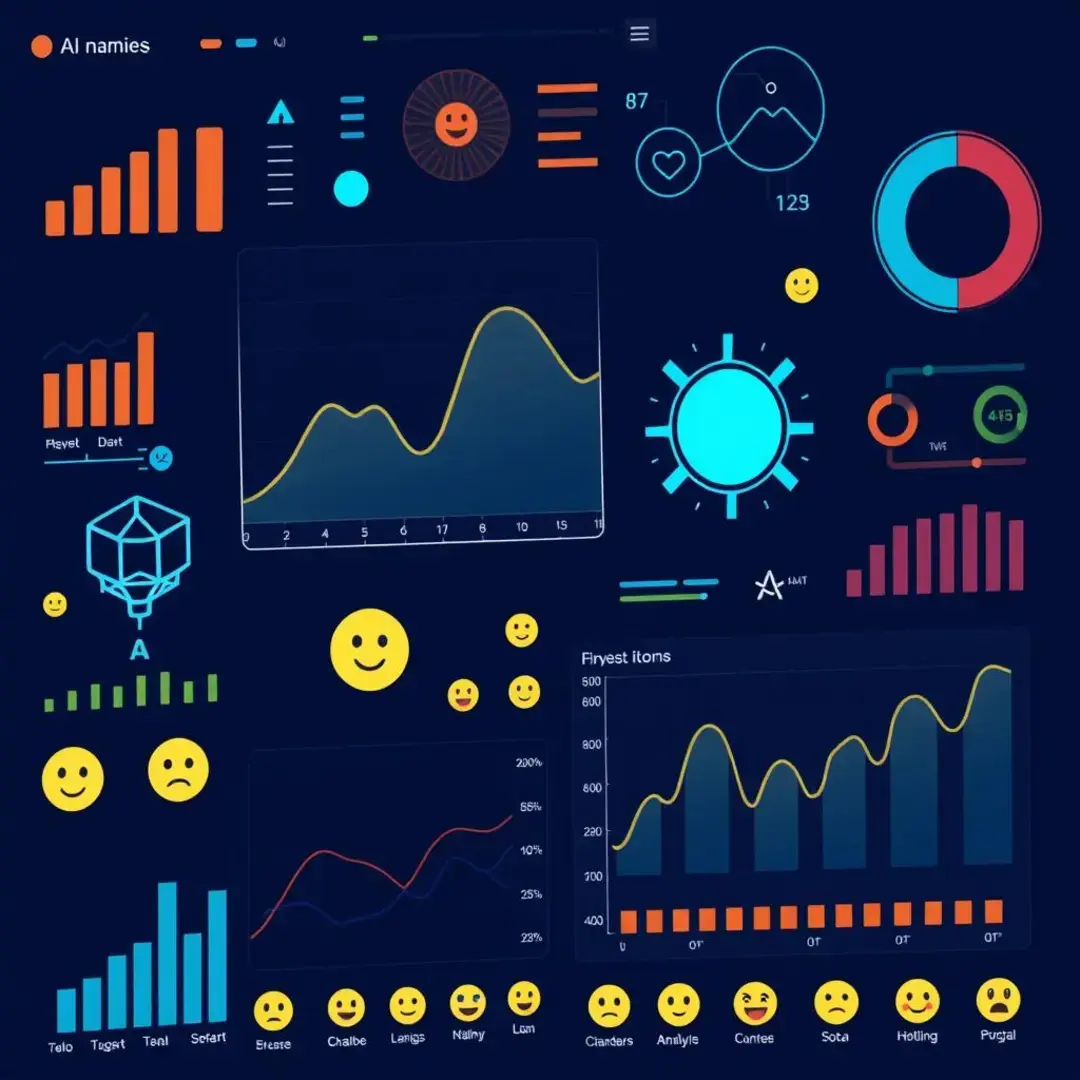Sentiment Analysis
Introduction

Overview of Sentiment Analysis in Natural Language Processing (NLP)
Sentiment Analysis refers to the use of Natural Language Processing (NLP), text analysis, and computational linguistics to identify and extract subjective information from source materials. Its primary objective is to determine whether a piece of text expresses a positive, negative, or neutral sentiment. This field has evolved significantly, becoming an essential tool for businesses aiming to understand consumers’ thoughts and feelings towards their brands.
As techniques in sentiment analysis advance, new approaches such as aspect-based sentiment analysis are developing. This method goes beyond simple sentiment classification by breaking down text into components or aspects, allowing for a nuanced understanding of individual product features. Such advancements enable organizations to tailor their offerings more specifically to consumer preferences.
Moreover, sentiment analysis interconnects with other NLP tasks such as topic modeling, which identifies themes in datasets and can enhance sentiment extraction. By leveraging these relationships, analysts can gain a more comprehensive output that not only captures sentiment but also contextualizes it within broader conversational frameworks.
Key Trends in Sentiment Analysis

Emerging Trends
Aspect-based sentiment analysis is gaining traction as it allows more targeted analysis of sentiments related to specific attributes of a product or service. This approach enables businesses to gather deeper insights into what aspects customers enjoy or dislike, thereby facilitating more informed decision-making.
Emotion detection represents another pivotal development in sentiment analysis, focusing on recognizing subtle emotional cues in text. Nuanced sentiment understanding can significantly impact a brand’s ability to engage authentically with customers, enhancing marketing efforts through more personalized content delivery.
With the growth of global markets, there is an increasing demand for multilingual and cross-cultural sentiment analysis. This trend supports companies that operate in varied linguistic environments to understand sentiments accurately across different cultures, ensuring that their messages resonate effectively worldwide.
Industry Impact
The use of sentiment analysis tools has remarkably transformed market research, enabling businesses to process vast amounts of customer feedback instantly. This rapid analysis helps detect shifts in consumer opinion and identifies emerging trends, allowing businesses to respond proactively to market changes.
In the realm of social media, sentiment analysis empowers brands to monitor public perception on various platforms. By analyzing sentiments in real-time, brands can enhance their reputation management strategies and address customer grievances promptly, ensuring a positive public image.
Overall, sentiment analysis significantly influences business decision-making. Companies can use sentiment-driven insights to shape marketing campaigns, enhance product development, and improve customer relationships, paving the way for strategic growth.
Challenges and Limitations
Despite advancements, sentiment analysis still faces substantial challenges. Sarcasm and irony pose significant hurdles, as understanding these can dramatically alter the sentiment extracted from text. Developing algorithms capable of deciphering these complexities remains an ongoing area of research.
Addressing bias in sentiment analysis models is another critical concern. If the training data contains bias, it may lead to skewed results that fail to represent diverse populations accurately. Fairness in sentiment analysis is imperative to ensure that all voices are considered in the analytical processes.
Furthermore, data sparsity can affect the performance of sentiment analysis models. The need for high-quality, robust training data is paramount, as limited or biased data can hinder the reliability of sentiment output. Achieving this remains a crucial step for any successful sentiment analysis implementation.
Future Outlook

Future Developments
Looking ahead, Explainable AI (XAI) is poised to play a significant role in sentiment analysis. By providing insights into how decisions are made by AI models, companies can better understand sentiment outputs and enhance transparency—crucial for user trust and adoption.
The advent of real-time sentiment analysis powered by continuous streaming data is on the horizon. Organizations that harness this capability will be able to adapt quickly to sentiment shifts, enabling them to respond to consumer feedback almost instantaneously.
Furthermore, integrating sentiment analysis with other AI technologies, such as machine learning and predictive analytics, can create more powerful models. This fusion can lead to a deeper understanding of customer behavior and more effective strategies for engagement.
Market Predictions
Market predictions indicate significant growth for the sentiment analysis field in the coming years. Estimate data suggests that as companies increasingly recognize the benefits of sentiment analysis, investment in this area is likely to rise, creating a robust ecosystem of tools and platforms.
Emerging applications are expected to span various industry verticals, including finance, healthcare, and e-commerce. By tailoring sentiment analysis applications to specific industry needs, companies can unlock unprecedented insights into their customers’ experiences and emotions.
Additionally, as the demand for sentiment analysis grows, investment trends will continue to reflect this upward trajectory. Startups and established businesses focused on innovate sentiment analysis solutions may find increasing funding opportunities as market interest surges.
Potential Impact on Users
On the user side, advancements in sentiment analysis promise more personalized experiences and targeted content. By analyzing user sentiments, companies can create tailored offerings that align better with individual customer preferences, enhancing overall satisfaction.
Enhanced customer service powered by sentiment insights can lead to quicker issue resolution and increased loyalty. When companies can identify negative sentiments quickly, they can proactively address concerns, thereby strengthening customer relationships.
Finally, the impact of sentiment analysis on social interactions and online communities cannot be underestimated. By understanding collective sentiments, platforms can foster healthier interactions and create spaces where users feel valued and understood.
How to Choose the Right Sentiment Analysis App

Step-by-Step Guide
The first step in choosing a sentiment analysis app is defining your specific needs and requirements. A clear understanding of what you aim to achieve will streamline the selection process and hone in on the best options.
Evaluate various sentiment analysis tools and platforms by reviewing their features, user reviews, and case studies. This due diligence will provide insight into what solutions might best fit your organizational needs.
Finally, once a decision is made, focus on implementing and integrating the chosen solution effectively. A well-planned rollout can help maximize the benefits of the new tool, ensuring it delivers the expected value to your organization.
Conclusion

In conclusion, sentiment analysis represents a transformative facet of Natural Language Processing that businesses can leverage to understand their customers better. With emerging trends, significant industry impact, and evolving technologies, the future of sentiment analysis is both promising and filled with potential. Organizations must stay informed about these developments and focus on choosing the right tools to capitalize on the many advantages sentiment analysis has to offer. As we move forward, the importance of accurately interpreting human sentiment will only grow, shaping how businesses interact with consumers and ultimately leading to enhanced experiences for everyone involved.
Factors to Consider
When selecting a sentiment analysis application, accuracy and performance metrics should be at the forefront. Reviewing historical performance data helps ensure that the chosen solution effectively delivers reliable sentiment insights.
Data compatibility with existing systems is crucial as well. Ensuring that the sentiment analysis tool integrates smoothly into your organization’s workflow will save time and reduce potential friction during implementation.
Lastly, consider scalability and cost-effectiveness. A sentiment analysis application should not only meet current needs but also scale as your requirements grow without incurring unsustainable costs or administrative burdens.





